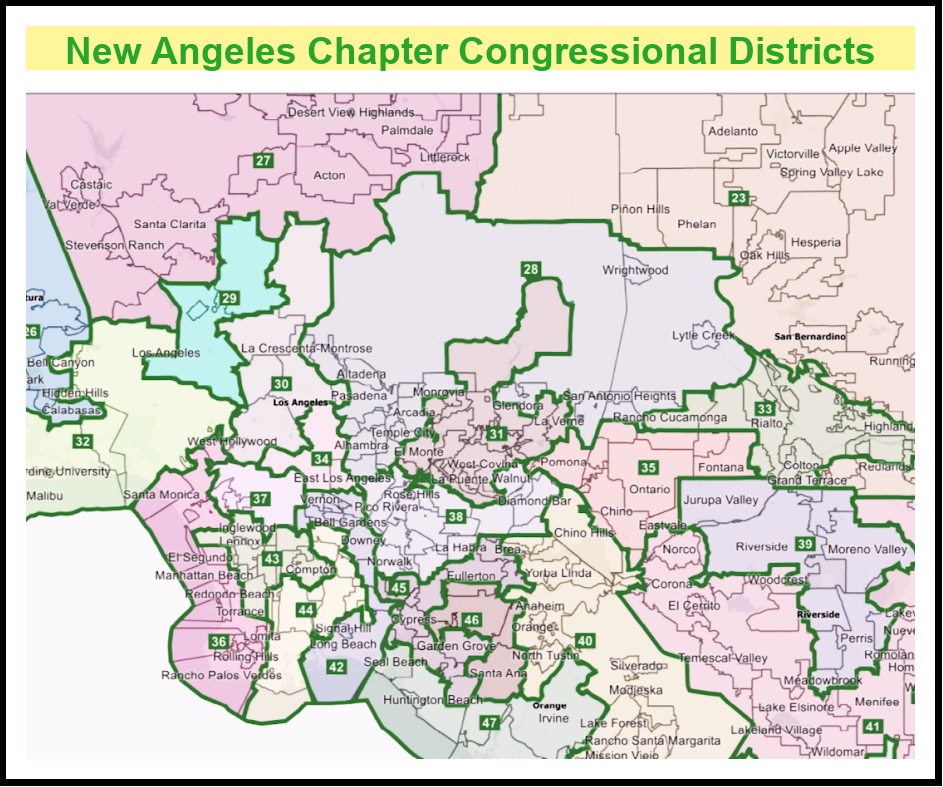New California Legislative and Congressional Districts Boost Influence of Latino and Environmental Voters

Angeles Chapter ExCom member John Monsen recently interviewed Sam Sukaton (pictured below) about the redistricting of congressional and legislative seats in California and, more specifically, in the Angeles Chapter. Sam is on the Sierra Club National Political Team. As part of his day job Sam managed a statewide redistricting campaign for the California Environment Voters. John managed a redistricting campaign for Nature for All that resulted in all of the public land in the Angeles and Western San Bernardino National Forests being located in more environmentally friendly congressional districts.


New 27th district, left, has a slightly higher percentage of registered Democrats than before, which could spell trouble for Republican Incumbent Mike Garcia who won his last election by 333 votes. Rep. Judy Chu’s new 28th district now includes the San Gabriel Mountains in the Western San Bernardino National Forest. Redistricting in 2021 located all of this important national forest land into more friendly congressional districts, which has long been a goal of Sierra Club Angeles Chapter forest activists.

Evolution of the congressional district anchored by Long Beach. New district is in a better position to address environmental justice issues like air pollution generated by transit corridors heading north from the Port of Long Beach. See Los Angeles Times useful before and after tool for where you live.

First term Republican Young Kim is running for reelection in the new 40th district. She may have an edge with voter registration favoring the Republicans and 17% of the citizens of voting age (CVAP) being Asian.

Inexplicably, last November the redistricting commission proposed dropping highly AAPI-populated Alhambra, Rosemead and Monterey Park from Rep. Judy Chu’s new 28th District. A coalition led by AAPI groups and supported by environmental groups got the decision reversed.

Sometimes it is good to paws, reflect and get your bearings. Ursine puns koala-fide as humor during LEV’s redistricting campaign after commissioner Sadhwani posted this Kevin de Leon video to more than scat-tered a-paws. It led to some serious discussions about the environment and redistricting. Word has it that de Leon was unfairly accused of panda-ing to his Eagle Rock constituents.


Add new comment